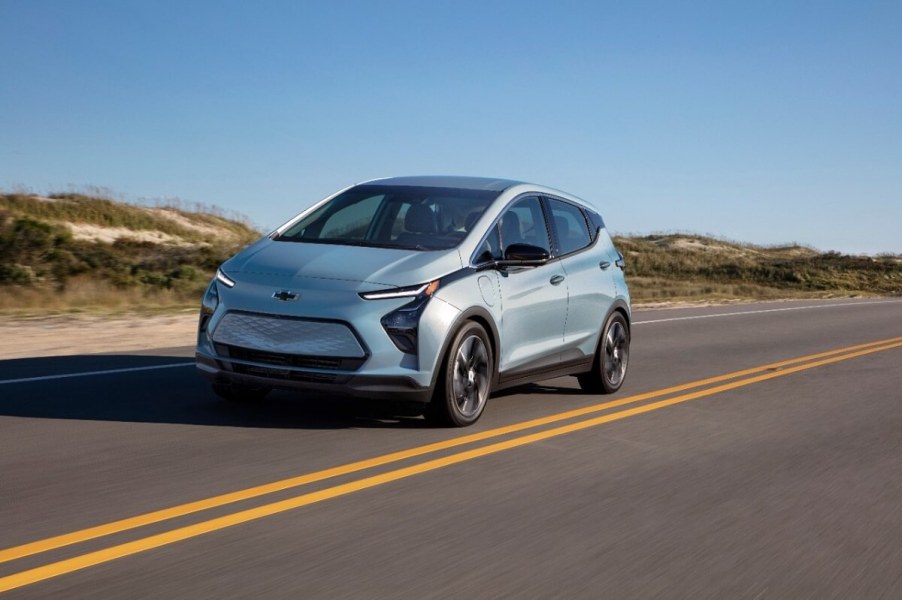
GM Might Not Be as Committed to EVs as They Are Letting On
Working toward zero emissions in its vehicles, General Motors claims to be focusing on an all-electric future. It has been investing heavily in U.S.-based battery cell manufacturing plants, assembly plants dedicated to electric vehicle production, lithium mining, and a state-of-the-art battery testing lab.
While the automaker strives to electrify a significant portion of its product lineup by 2035, it may not be as committed to EV production as it appears. It recently made a substantial investment in the continuing production of internal combustion engine vehicles, leaving many industry analysts questioning the future of GM EVs.
GM investing in the production of next-generation pickup trucks
GM recently announced plans to invest $632 million into its assembly plant in Fort Wayne, Indiana, which currently builds the GMC Sierra 1500 and Chevy Silverado 1500 light-duty pickup trucks.
According to GM Authority, the considerable investment supports the production of next-generation full-size light-duty trucks which utilize an internal combustion engine (ICE). The automaker plans to upgrade tooling, conveyors, and other equipment in the plant’s general assembly areas.
Since 2013, General Motors has invested over $31.6 billion in its U.S. manufacturing facilities, with more than $2.8 billion earmarked for Indiana operations.
A GM spokesperson explained the latest investment highlights the automaker’s “commitment to continue providing customers a strong portfolio of ICE vehicles for years to come.” This statement seems a little contradictory to the company’s messaging about EVs.
The automaker is also investing in its heavy-duty pickup line
As GM moves toward electrification of its fleet, the company appears to be staying firmly planted in the pickup truck segment. With a recent $1 billion investment to continue building heavy-duty pickups, the automaker is not saying goodbye to ICE vehicles or its gas-guzzling V8 engines.
While it is smart for GM to continue investing in the part of its business that makes it the most money (trucks), EV advocates are not impressed.
Electrek claims, “GM is sending mixed messages here. Are they all-in on EVs, or is it just talk? Because V-8 engines won’t help GM sell more electric vehicles and most certainly will not help them hit its goal of eliminating tailpipe emissions from its vehicles by 2035.”
Can GM invest in trucks and the future of electric vehicles at the same time?
GM should be able to do both by investing in its trucks while still thinking about the future of EVs in its most popular models. The automaker needs to continue making a profit while transitioning its vehicles to battery-powered engines. InsideEVs reports, “EVs are still 45% more expensive to make than combustion-engined cars.” By 2030 the difference should be approximately 9%, but in the meantime, the automaker can’t give up on its pickup trucks.
An analysis by Reuters found the recent investments made by GM will keep GM’s most profitable ICE trucks and SUVs in production for at least another 10 to 12 years, which is longer than expected. They explain, “this should enable the automaker to reap tens of billions of dollars in additional profit, according to Reuters estimates, before it shifts completely to zero-emission electric vehicles in 2035.”
General Motors CFO Paul Jacobson recently told investors, “We’re strategically transitioning the business, while at the same time leveraging our important ICE portfolio with new and refreshed products, driving continued robust demand for our vehicles.”


